Ghosts of Airships: 7 Vestiges of the Great Helium Hope
 Graf Zeppelin flying over the mountains (via SDASM Archives)
Graf Zeppelin flying over the mountains (via SDASM Archives)
Zeppelins were the great helium hope of the early 20th century. Floating above the ground like silvery clouds, they represented an optimistic, international future of travel. However, deposed by the airplane and tarnished by epic disasters like the Hindenburg crash in 1937, the airships became obsolete. Now remains of their infrastructure linger like phantoms of an alternative future, from vacant gargantuan hangars to unused docks on the Empire State Building in New York and the InterContinental Chicago Magnificent Mile tower. Below are seven of these ghosts of airships.
GOODYEAR AIRDOCK
Akron, Ohio
 The Goodyear Airdock in 2009 (via Historic American Buildings Survey)
The Goodyear Airdock in 2009 (via Historic American Buildings Survey)
One of the impressive engineering feats of the airship age is the Goodyear Airdock in Akron, Ohio. Constructed in 1929, it’s around 200 feet high and over 1,000 feet long. The cavernous interior generates its own weather, including sporadic rain. It was designed as a space for building dirigibles, which were released once completed by massive opening doors. It’s now owned by Lockheed Martin and used mainly for storage.
 The Goodyear Airdock in an archive photograph (a man is standing up at the top!) (via Historic American Buildings Survey)
The Goodyear Airdock in an archive photograph (a man is standing up at the top!) (via Historic American Buildings Survey)
 Airship construction at the Goodyear Airdock in an archive photograph (via US Navy)
Airship construction at the Goodyear Airdock in an archive photograph (via US Navy)
HANGAR ONE
Moffett Field, California
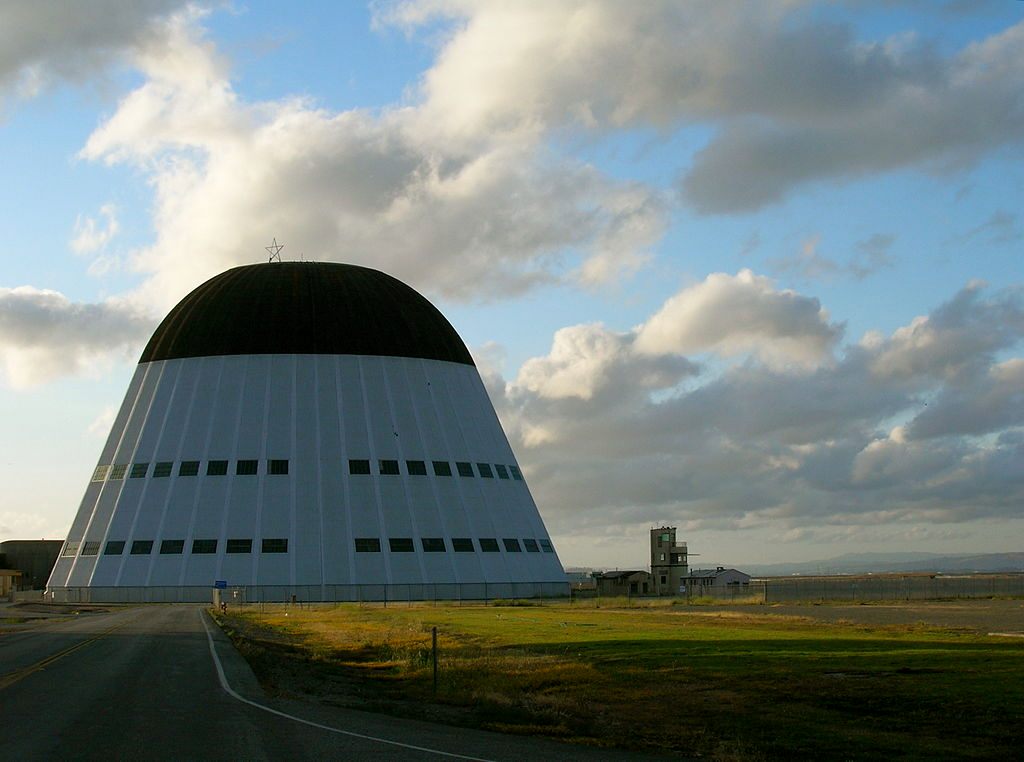 Hangar One in 2007 (photograph by FlyingToaster/Wikimedia)
Hangar One in 2007 (photograph by FlyingToaster/Wikimedia)
At Moffett Field in Mountain View, California, Hangar One looms as one of the world’s biggest freestanding buildings. Built in the 1930s, it sprawls over eight acres, giving it, like the Goodyear Airdock, a distinct weather that sometimes includes hovering fog. As a naval hangar, it housed the USS Macon — constructed at the Goodyear Airdock — but later became part of the NASA Ames Research Center. However, it underwent a massive restoration recently due to hazardous substances that necessitated cleaning, and is now being being leased to Google’s Planetary Ventures. Their plans include aviation projects along with robotic and space technology, potentially revitalizing the hangar for the next age of flight.
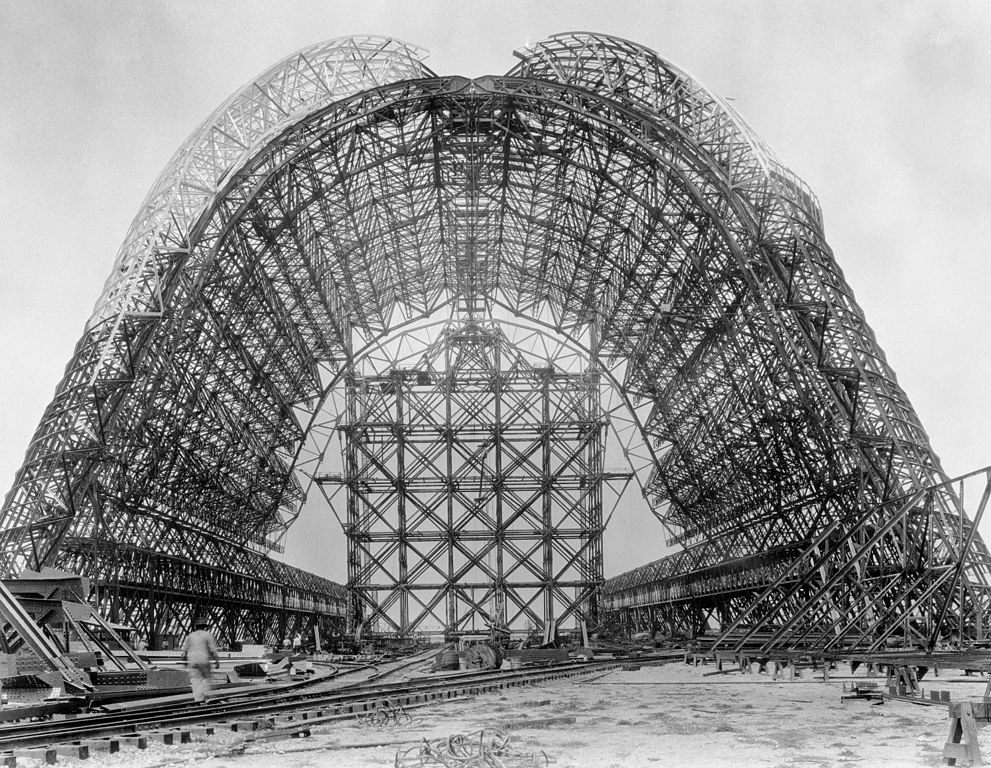 Construction of Hangar One in the 1930s (via NASA/Ames Research Center)
Construction of Hangar One in the 1930s (via NASA/Ames Research Center)
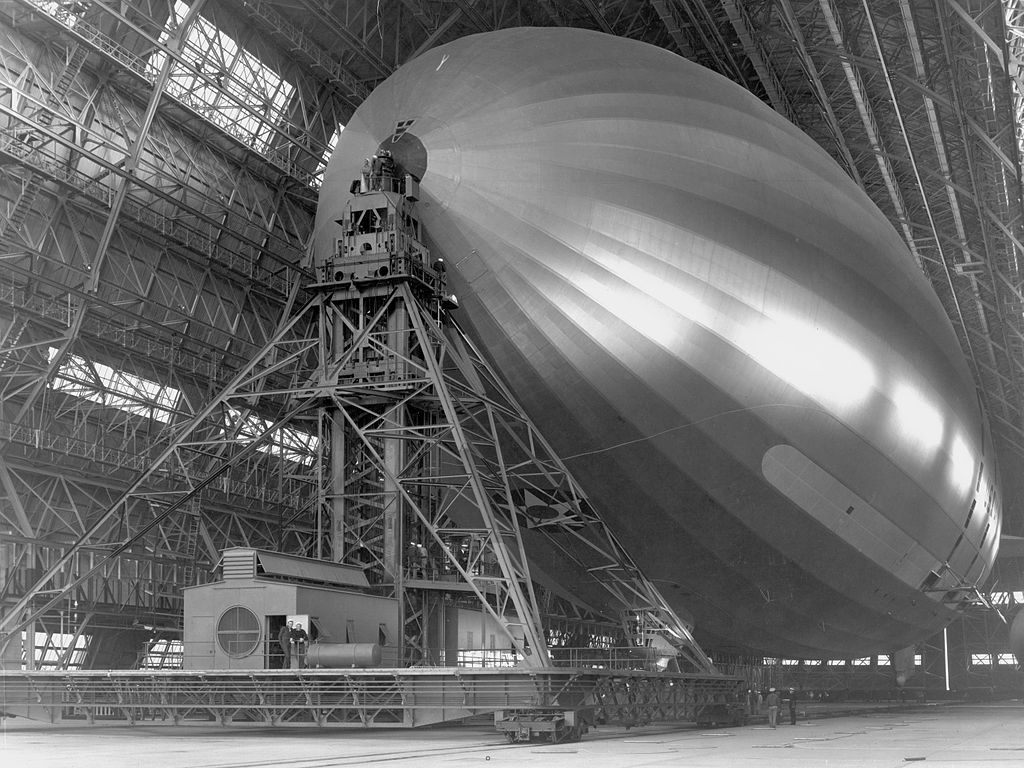 The USS Macon in Hangar One (via NASA/Ames Research Center)
The USS Macon in Hangar One (via NASA/Ames Research Center)
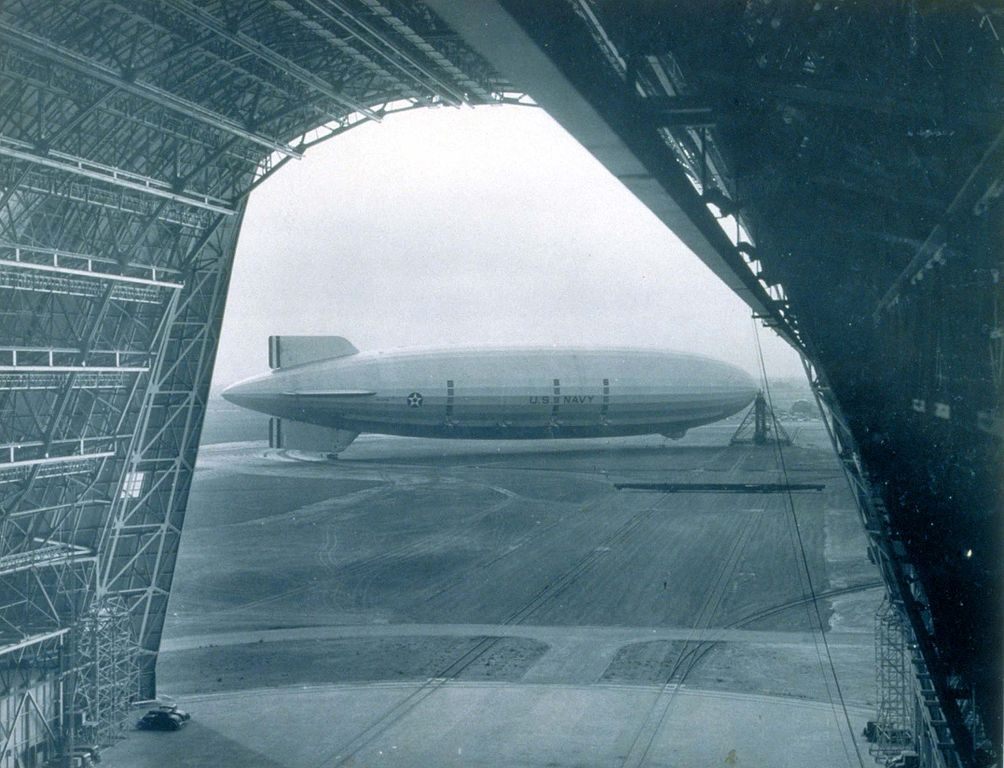 View of the USS Macon from Hangar One in 1934 (via US Navy)
View of the USS Macon from Hangar One in 1934 (via US Navy)
TUSTIN BLIMP HANGARS
Tustin, California
 Tustin Blimp Hangar in 2014 (photograph by Nandaro/Wikimedia)
Tustin Blimp Hangar in 2014 (photograph by Nandaro/Wikimedia)
In Tustin, California, two hangars covering nearly seven acres at the Marine Corps Air Station represent the Lighter-than-Air (LTA) Base set up in 1942 for World War II airship operations. Decommissioned following its military use, a new zeppelin project was recently underway by the Worldwide Aeros Corp to construct a new prototype blimp. Unfortunately, a roof collapse in 2013 reportedly wrecked the new dirigible ”beyond repair.”
 The air station when it was in military use (via the Tustin Area Historical Society)
The air station when it was in military use (via the Tustin Area Historical Society)
 Aerial view of the air station when it was in use (via the Tustin Area Historical Society)
Aerial view of the air station when it was in use (via the Tustin Area Historical Society)
AERIUM
Brandenburg, Germany
 A water park in a former Luftwaffe air hangar (via Tropical Islands Resort)
A water park in a former Luftwaffe air hangar (via Tropical Islands Resort)
Some airship hangars have entirely new lives far from aviation. The defunct Aerium hangar in Brandenburg, Germany, is now the extravagant Tropical Islands Resort. The site was originally set up in 1938 for the Luftwaffe, then company Cargolifter arrived in the 1990s and constructed a hangar almost 400 feet high and over 1,000 feet long, the water park opened in 2004 with an indoor rainforest and artificially sunny beach that can host 6,000 guests at a time.
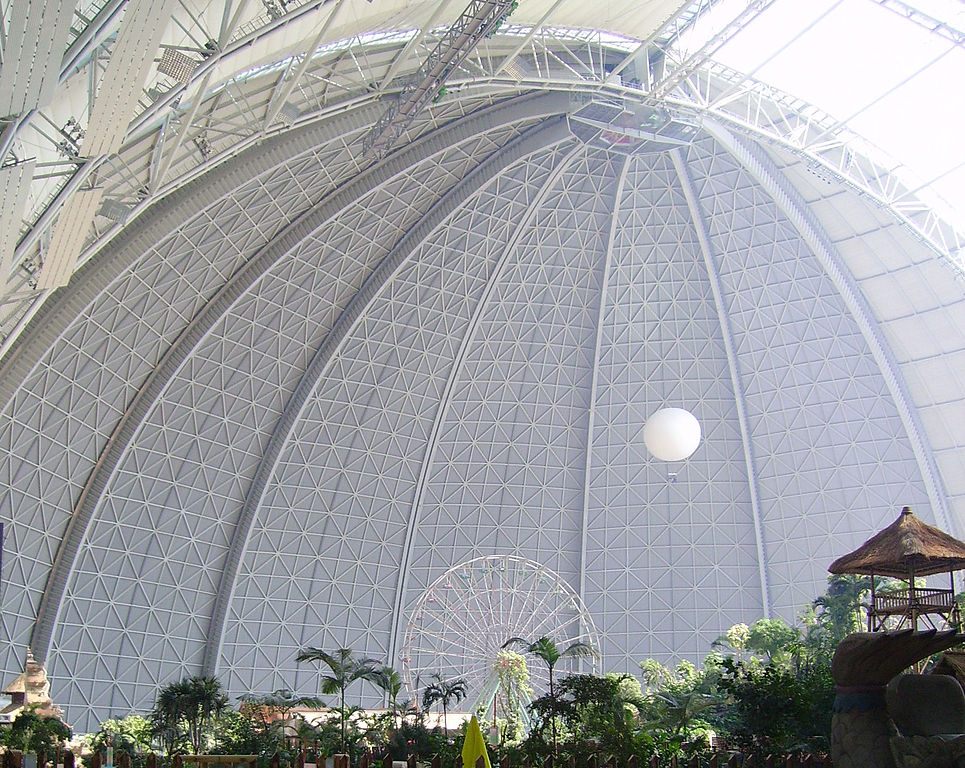 Inside Tropical Islands Resort (photograph by Immanuel Giel/Wikimedia)
Inside Tropical Islands Resort (photograph by Immanuel Giel/Wikimedia)
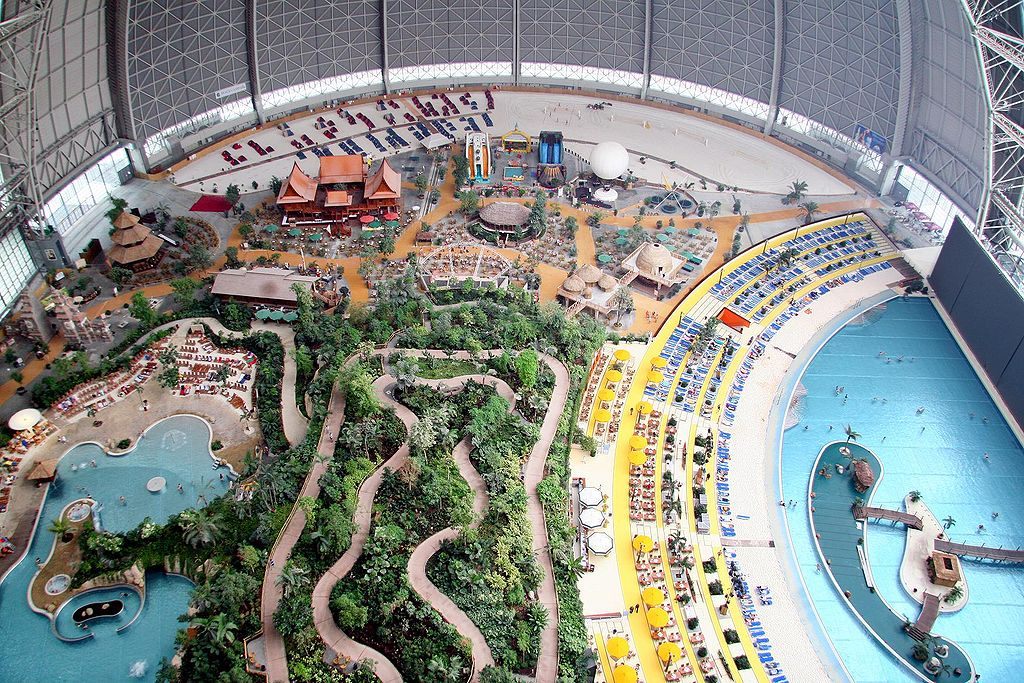 Aerial view of Tropical Islands Resort (photograph by Bmalina/Wikimedia)
Aerial view of Tropical Islands Resort (photograph by Bmalina/Wikimedia)
RIGA CENTRAL MARKET
Riga, Latvia
 Panorama of Riga with the airship hangars (photograph by Andrey Upadyshev/Flickr)
Panorama of Riga with the airship hangars (photograph by Andrey Upadyshev/Flickr)
Less ostentatious than Germany’s indoor water park, four zeppelin hangars in Riga, Latvia, represent a different type of reuse. 3,000 vendors installed in 778,000 square feet of the defunct hangars represent one of Europe’s largest indoor markets, a thriving example of recycling large scale, obsolete architecture.
 Inside the Riga Central Market (photograph by Charlie/Flickr)
Inside the Riga Central Market (photograph by Charlie/Flickr)
 Central Market in Riga (photograph by William Whyte/Flickr)
Central Market in Riga (photograph by William Whyte/Flickr)
ZEPPELIN MUSEUM
Friedrichshafen, Germany
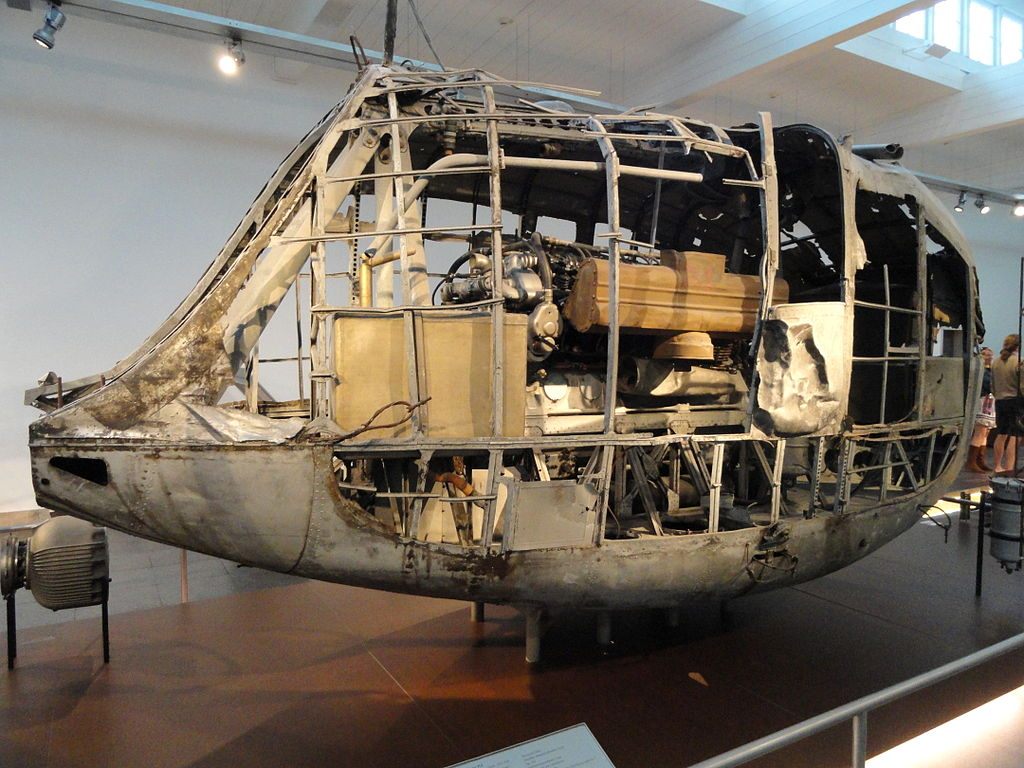 Zeppelin Museum in Friedrichshafen, Germany (photograph by Daderot/Wikimedia)
Zeppelin Museum in Friedrichshafen, Germany (photograph by Daderot/Wikimedia)
Relics of zeppelin travel’s brief heyday are preserved in Germany’s Zeppelin Museum, located in Friedrichshafen where the Hindenburg was built. The museum houses a replica of the doomed airship’s cabin alongside other historic collections. It’s a rare trove of the optimism that characterized the early days of dirigible travel, when technology transformed more basic hot air balloons into huge passenger airships.
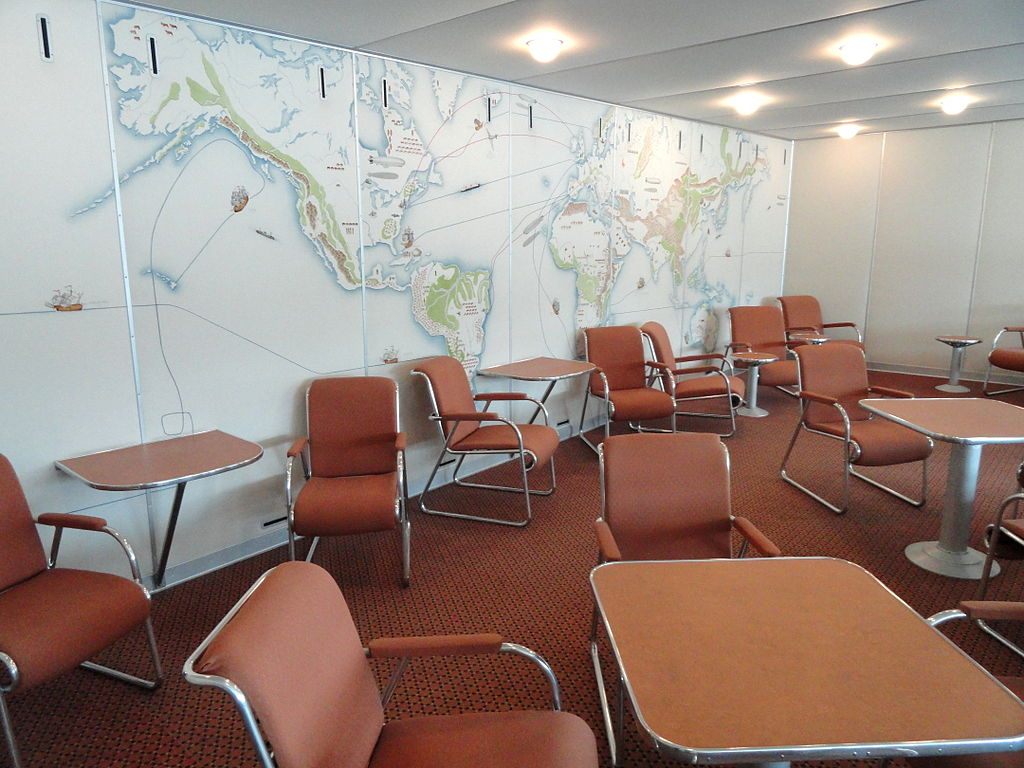 Zeppelin cabin lounge reconstruction (photograph by Daderot/Wikimedia)
Zeppelin cabin lounge reconstruction (photograph by Daderot/Wikimedia)
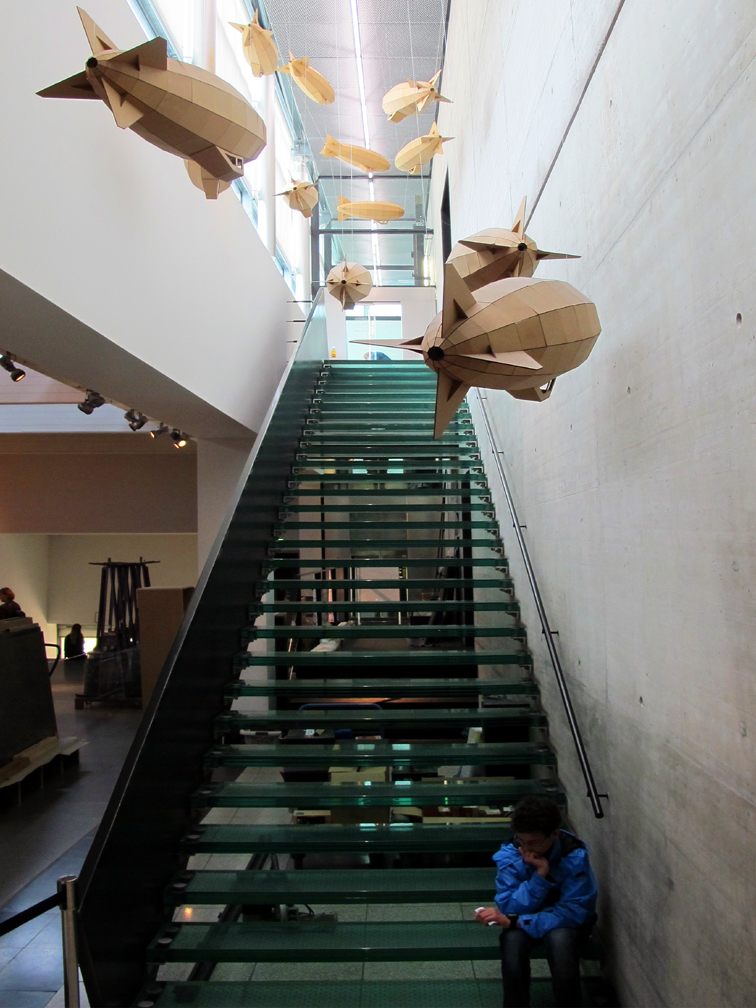 Zeppelin Museum (photograph by Gary A. Baratta/Wikimedia)
Zeppelin Museum (photograph by Gary A. Baratta/Wikimedia)
HINDENBURG CRASH SITE
Lakehurst Naval Air Station, New Jersey
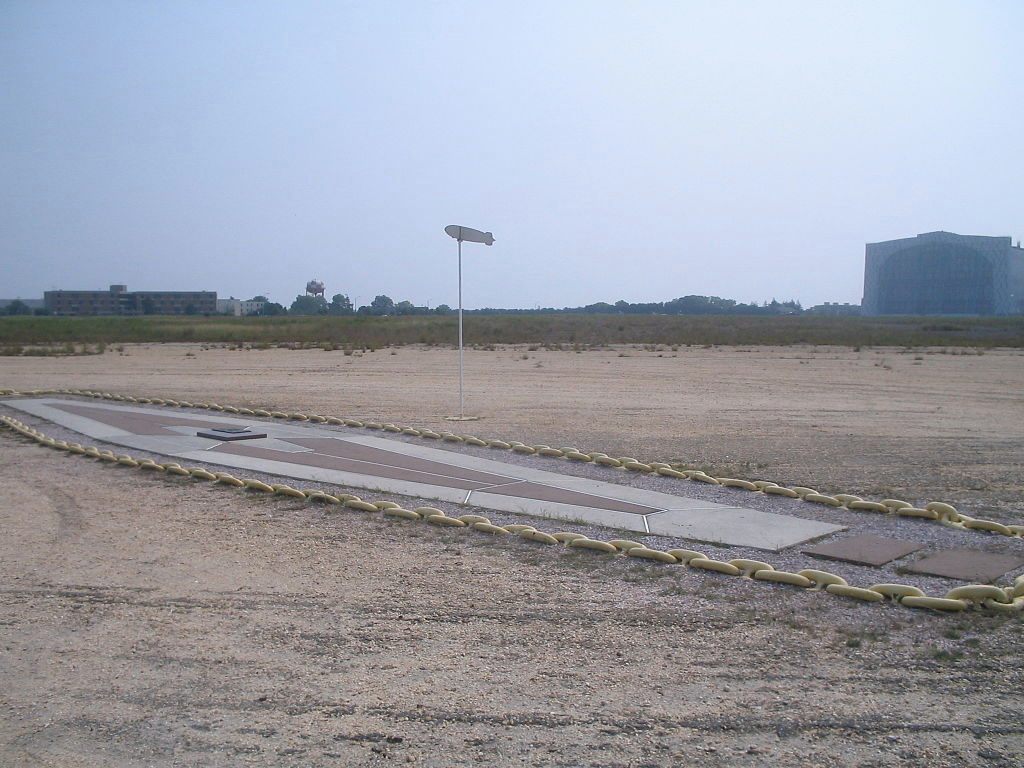 Hindenburg memorial site in 2007 (photograph by Paxswill/Wikimedia)
Hindenburg memorial site in 2007 (photograph by Paxswill/Wikimedia)
As for the belated Hindenburg, the great icon of zeppelin failure, it is remembered with a relatively humble memorial. At the site of its crash in New Jersey, a concrete outline represents where on May 6, 1937, 35 people were consumed by the flames of the airship’s fiery collapse at Lakehurst Naval Air Station. (Designed for inflation with helium, it was instead filled with hydrogen, an earlier and more flammable zeppelin lifting agent.) The disaster wasn’t the only nail in the airship coffin, but it certainly didn’t instill a sense of security in the astonishing new form of aviation.
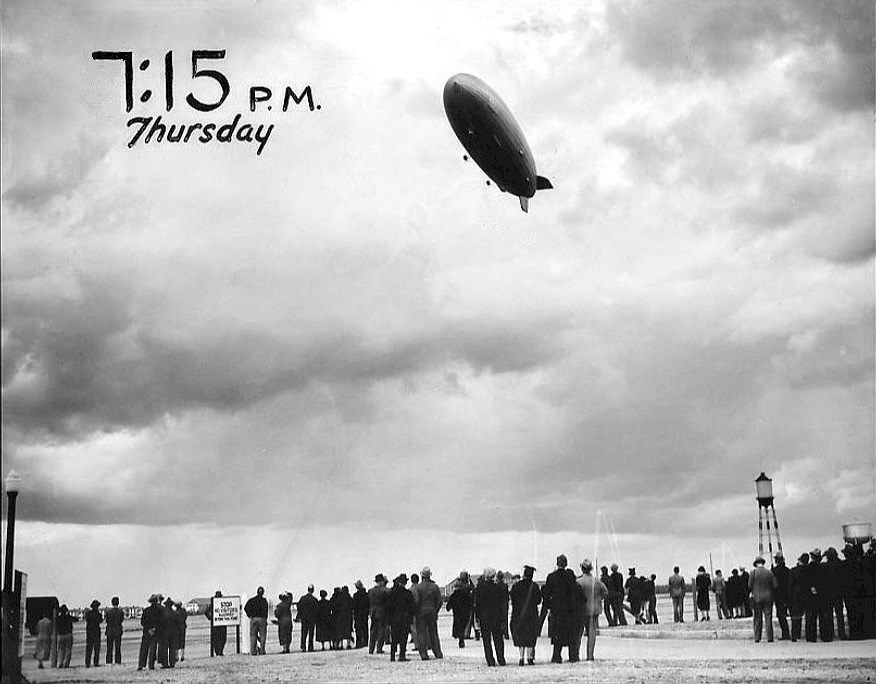 The Hindenburg landing in Lakehurst, New Jersey, just before crashing in 1937 (via International News Photos)
The Hindenburg landing in Lakehurst, New Jersey, just before crashing in 1937 (via International News Photos)
 Crash of the Hindenburg in 1937 (via Wide World Photos/Pathé)
Crash of the Hindenburg in 1937 (via Wide World Photos/Pathé)
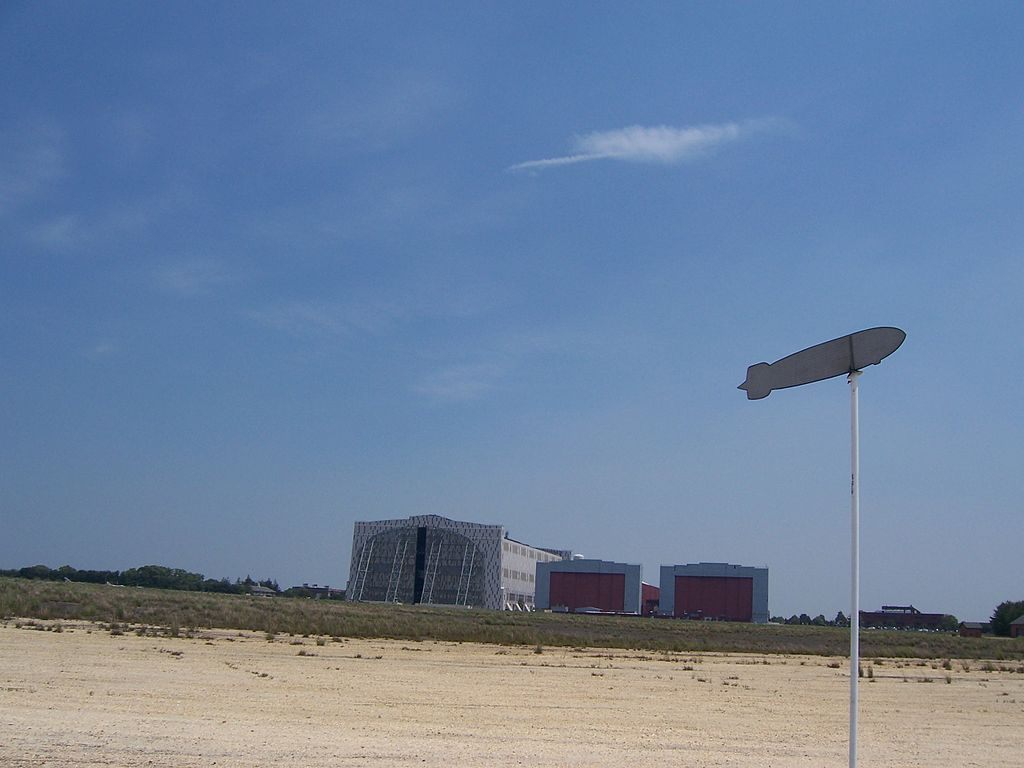 Hindenburg memorial site (photograph by Mike Romano/Wikimedia)
Hindenburg memorial site (photograph by Mike Romano/Wikimedia)

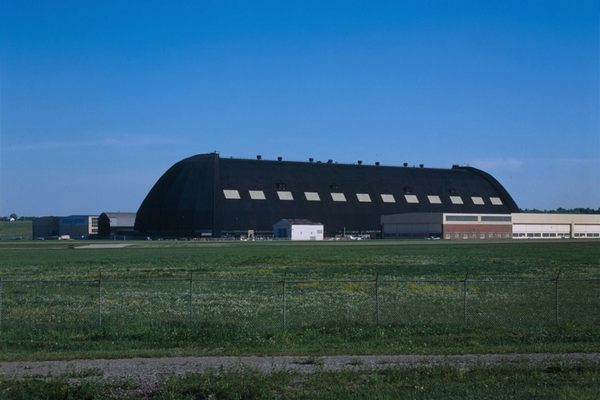
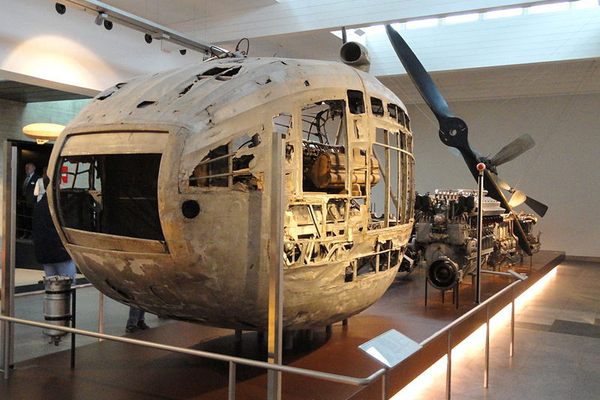

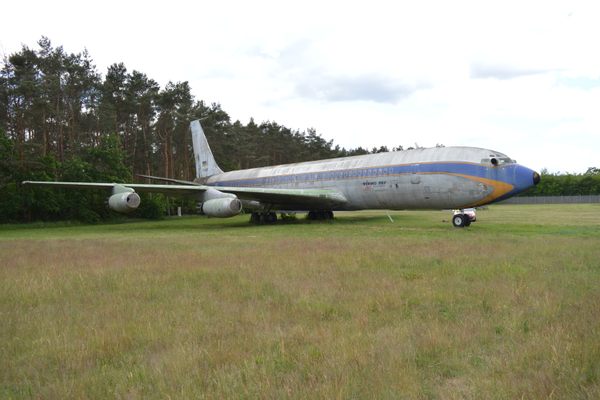







Follow us on Twitter to get the latest on the world's hidden wonders.
Like us on Facebook to get the latest on the world's hidden wonders.
Follow us on Twitter Like us on Facebook